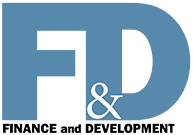Book Reviews
Finance & Development, September 2014, Vol. 51, No. 3
Learn to Grow
Joseph E. Stiglitz and Bruce C. Greenwald

Creating a Learning Society
Columbia University Press, New York, 2014, 680 pp., $34.95 (cloth).
This landmark book, initially conceived as a set of lectures in honor of Kenneth Arrow (and implicitly of Bob Solow), combines Arrow’s classic learning-by-doing paper with Solow’s growth model. It proposes that technical change is a process of learning and that firms grow and countries develop as they learn in three ways—invention, innovation (adapting inventions to production processes), and “learning how to learn.” What differentiates successful from less successful economies, the authors say, is a process of learning that permits firms, sectors, and eventually the whole economy to achieve its true potential.
The idea that learning determines economic success ties together various strands of the literature and calls others into question. The vaguely defined “dynamic comparative advantage” is fleshed out by questioning whether the standard notion of comparative advantage, based on the factors of production, still has meaning (in a world of capital mobility). The authors propose that most firms are stuck inside a production possibility frontier; learning allows them to approach the frontier and push it out, even though some might argue that such a frontier may itself be ill defined in a world in which firms and economies grow by learning. Perhaps most fundamentally, the book provides a fresh perspective on the role of government in stimulating growth and welfare. Knowledge is a public good and absent government intervention will be undersupplied in a competitive market economy. Yet how much government intervention yields the most learning is not clear-cut. Joseph Stiglitz and Bruce Greenwald argue that Joseph Schumpeter’s view that monopolies generate innovation does not always hold, but acknowledge that the opposing view—that competition offers greater incentives for innovation—may not always be true either. Firms under competition are smaller and hence less able to bear the fixed costs of innovation. The book makes a strong case for industrial policy that spurs domestic firms to innovate and learn, and retain that learning at home. But the type of industrial policy it proposes is quite different from the recently revived practice of “picking winners,” especially winners based on comparative advantage.
These and other somewhat complex ideas are presented in an intuitive and systematic way. Occasionally, simple models (in the Arrow-Solow tradition) are introduced to sharpen intuition and clarify conclusions. Parts I and II are a model of how to present new ideas to an economically literate, but not necessarily specialist, readership. Part I starts with the importance of learning, proceeds to a description of how firms learn, takes on the issue of market structure, and ends with welfare and economy-wide considerations. Part II delves into more complicated issues, such as learning in a closed economy and long-run dynamics, but still based on intuition and simple models. Parts I and II are a tutorial in thinking like an economist—using the profession’s tools to solve the most compelling problem of our time: how to help societies achieve sustainable growth. Stiglitz and Greenwald’s enthusiasm for the subject is infectious.
Part III, “Policies for a Learning Society,” is, however, a bit of a disappointment, in part because it lacks the rigor and intuition of the first two parts. This section begins with a long and rather tired critique of the Washington Consensus and full-blown trade liberalization. Whether or not this is a straw man argument, the critique does nothing to draw out the policy implications of the authors’ theory of a learning society. The first two parts of the book make a solid case for government intervention to promote learning. The challenge is how to design these interventions in such a way that they don’t create the kinds of government failures that accompanied previous attempts at intervention (such as the misguided industrial policies in Africa before the 1990s). Stiglitz and Greenwald allude to this challenge in their brief section on political economy. But they provide no guidance (except for the universal “it depends on country circumstances”). Yet this is the question that policymakers, especially those who have been burned by well-intentioned but ultimately damaging policy advice, are asking. It is also the challenge posed by Philippe Aghion in his discussant’s comments on the original lecture, in which he asks whether the arguments for industrial policy are “stronger than the powerful political economy counter arguments” and concludes with the sensible advice to “experiment, and then make sure you can stop the intervention if it turns out not to be efficient.”
This book is so powerful and well done that the disappointment with the policy section is not a criticism. Rather, it is an invitation to write a follow-up volume, one that addresses head on questions of policy design and implementation—as well as the underlying political incentives—for a learning society.
Shantayanan Devarajan
Chief Economist, Middle East and North Africa
World Bank


